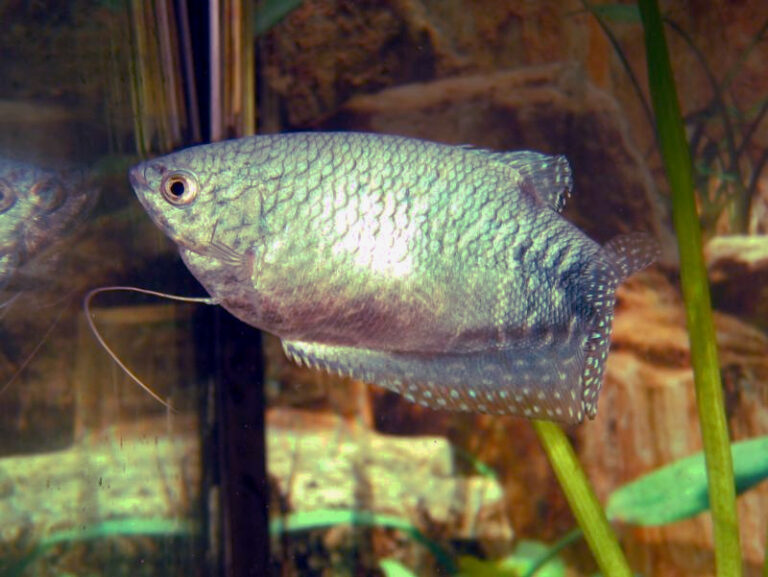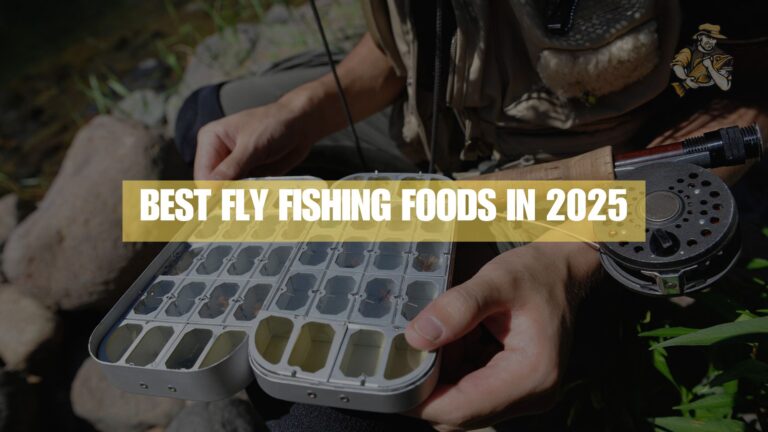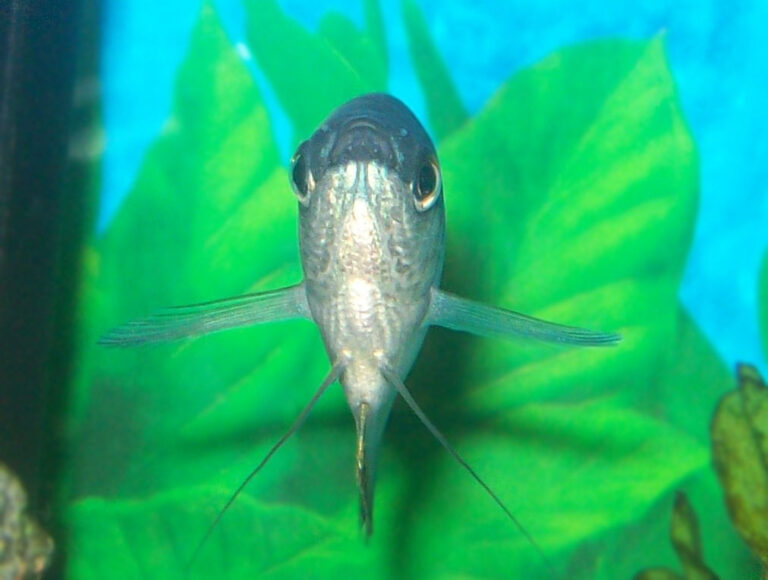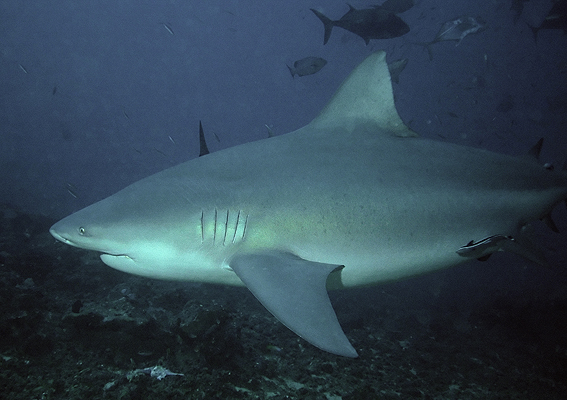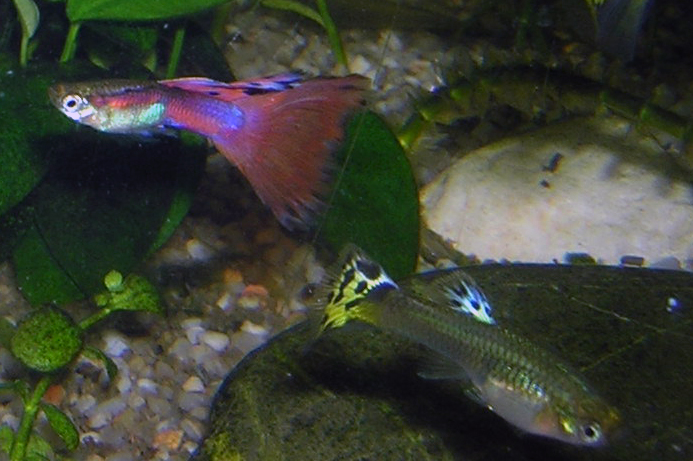European Pike Fishing: Top Techniques for Northern Pike
By Adam Hawthorne | Last Modified: May 19, 2025
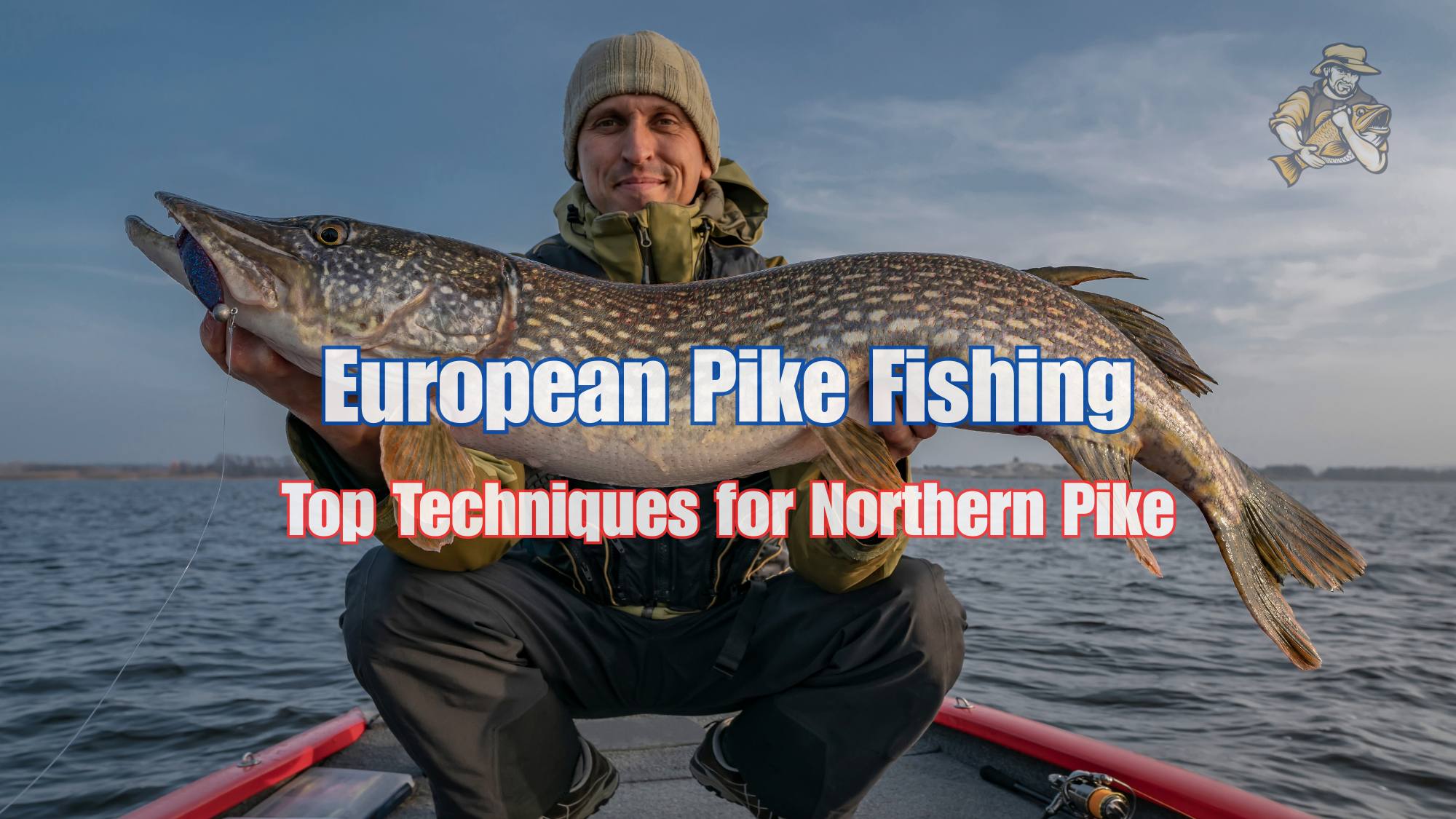
I still remember my first encounter with European pike fishing methods. It was during a trip to Sweden about eight years ago – my brother-in-law Michael had arranged a guide on Lake Mälaren. Coming from Michigan where I’d caught plenty of northerns using traditional American tactics, I figured I knew what I was doing. Turns out I didn’t know squat.
By mid-morning, our Swedish guide had landed four pike over 15 pounds while I was still trying to figure out why my usual retrieves weren’t working. That humbling experience sent me down a rabbit hole of European pike fishing techniques that completely transformed how I approach these predators.
European Pike Fishing Approaches That Challenged My Thinking
European anglers have developed pike fishing into something of an art form, particularly in countries like Sweden, Finland, the Netherlands, and the UK. What struck me immediately was how differently they approach everything from lure selection to retrieve speeds.
The biggest difference? Precision and patience. While many American pike anglers (myself included) tend to cover water quickly with fast retrieves and frequent casts, Europeans often slow everything down. They meticulously work smaller areas with incredible attention to detail.
Last October, I fished with Klaus, a German pike specialist who spent nearly 20 minutes working a single fallen tree with about ten different presentations. I was practically jumping out of my skin with impatience, wanting to move on. Then he extracted a 38-inch pike from that spot that I would have completely missed with my usual approach.
Their attention to weather patterns is also something else entirely. My fishing logs from Michigan typically noted basic conditions like “cloudy” or “sunny,” but my European counterparts track barometric pressure changes, minor temperature fluctuations, and even moon phases with religious dedication.
Key Differences in European Pike Fishing Mentality
- Much slower, more methodical retrieves
- Extreme focus on lure action and swimming depth
- Meticulous attention to weather patterns and pressure systems
- Willingness to downsize lures substantially
- Heavy emphasis on natural presentation over speed or flash
- More specialized gear for specific situations
- Greater focus on catch-and-release and careful fish handling
One afternoon on a small Dutch canal, I watched a local angler work the same 20-yard stretch for over an hour, making minor adjustments to his jerkbait’s action with each cast. I would have given up after 10 minutes tops. He landed three quality pike while explaining how slight changes in his retrieve speed triggered different reactions from fish that had likely seen countless lures before.
European-Style Soft Plastic Rigging for Wary Pike
If there’s one technique that completely changed my pike fishing results, it’s the European approach to soft plastics. While we Americans often throw giant paddle tails on heavy jigheads and burn them back, Europeans have developed finesse presentations that are devastatingly effective, particularly for pressured fish.
The first time I saw these rigs in action was in the Netherlands, fishing the heavily pressured polders near Amsterdam. My guide showed up with what looked like bass fishing gear – medium-light rods, 20-pound fluorocarbon leaders, and soft plastics half the size I’d normally use for pike.
“These fish see lures every day,” he explained while rigging a 5-inch shad on a lightweight 4/0 wide-gap hook with no weight at all. “They’re not stupid.”
Before that trip, I’d never have considered fishing for pike with unweighted soft plastics. The results were eye-opening – not only did we catch numbers, but the average size was impressive despite the heavy fishing pressure.
The European approach to soft plastic rigging typically involves:
- Slightly smaller profiles (4-6 inches rather than 6-10 inches)
- Extremely sharp, high-quality wide-gap hooks
- Multiple rigging styles for different conditions
- Minimal or no added weight when possible
- Ultra-slow, lifelike retrieves
My favorite rig that I’ve brought back to Michigan is their take on the jika rig, which the Dutch pike anglers I met had modified specifically for clear, shallow waters. It’s essentially a Texas-rigged soft plastic with a small tungsten weight pegged about 4-5 inches above the hook. This creates a horizontal presentation with a subtle, gliding fall that absolutely murders pike, especially in gin-clear water.
Obviously, soft plastics aren’t anything new for pike fishing. But the European approach to size, weight, and especially retrieve speed completely changed my success rate. I was catching more pike in high-pressure situations by essentially doing the opposite of what most American anglers (myself included) typically do.
A real-world example: Last year, I took some of these techniques to a local tournament on Saginaw Bay where most competitors were throwing large, flashy spinnerbaits and crankbaits. Using a 5-inch unweighted paddletail with an ultra-slow retrieve, I managed a solid second place while most anglers struggled. The winning angler, interestingly enough, was also using European-style finesse tactics he’d picked up in the UK.
The Match-the-Hatch Mentality in European Waters
One thing that genuinely impressed me about European pike anglers is their obsessive attention to matching local prey. While we certainly consider forage in American waters, Europeans take this to another level entirely.
Fishing in Ireland a few years back, my guide Tom arrived with a small aquarium net and spent the first 30 minutes catching tiny baitfish along the shoreline. He studied their size, color, and swimming pattern before selecting lures that perfectly mimicked what he found.
“That’s a pike’s breakfast right there,” he said, holding up a 3-inch roach. “Why would we throw anything else?”
We rigged accordingly with subtle, natural-colored lures in the exact size of the prevalent baitfish. The results spoke for themselves – seven pike that morning including a fat 42-incher that inhaled a lure that perfectly matched the local forage.
This match-the-hatch approach is particularly evident in their soft bait color selection. While bright chartreuse and white are pike fishing staples in the States, Europeans often opt for much more subdued, natural tones:
- Brown/orange combinations for mimicking perch
- Silver/blue patterns for matching roach and other silverfish
- Olive/yellow for imitating young pike (yes, pike are cannibalistic)
- Subtle translucent patterns for clear water situations
There’s a small bait shop in northern Finland that I visited which stocks over 50 slightly different brown/copper colored lures, each designed to match specific local perch colorations in different lakes. That level of detail seemed excessive until I saw how effectively they triggered strikes from educated pike.
I’ve since adopted this approach on my home waters in Michigan, taking time to study the predominant forage before selecting lures. The difference has been significant, especially when fishing clear waters like Torch Lake where the pike can get a good look at your presentation.
Dead Bait Tactics That Revolutionized Winter Pike Fishing
Perhaps the biggest revelation from European pike fishing came during the winter months. While we certainly use tip-ups and live bait for pike through the ice in the States, the European approach to dead baiting – particularly in the UK where it’s elevated to an art form – completely changed my cold-water strategies.
I was initially skeptical when a British angler named Richard suggested we target big winter pike using dead herring rather than the lively shiners I’d always used. “Dead bait outfishes live bait three to one for trophy pike in winter,” he insisted. I thought he was nuts.
That day changed everything I thought I knew about winter pike fishing. Using specialized dead bait rigs with sophisticated floats and bite detection, we landed multiple fish over 15 pounds, including my personal best winter pike at 25 pounds.
The key differences I observed in European dead baiting for pike:
- Extremely fresh, high-oil baitfish (herring, mackerel, sardines)
- Specialized rigging with multiple hooks for better hookups
- Strategic bait placement based on underwater features
- Subtle scent enhancements (I’ve seen everything from garlic oil to WD-40)
- Careful monitoring of bite detection systems
What’s particularly interesting is how Europeans often prefer dead baits during the coldest months when conventional wisdom says pike want the most active presentations. The theory, which now makes perfect sense to me, is that in very cold water, pike prefer an easy meal that doesn’t require chasing down active prey.
I’ve since incorporated these dead bait techniques for my winter pike fishing in northern Michigan, especially on Mullett Lake where the deep, clear water makes winter pike notoriously finicky. The results have been consistently better than my old methods, particularly for targeting larger specimens.
One critical tip I picked up from a Scottish pike specialist: instead of just throwing out whole dead baits, take the time to “prepare” them by making small incisions that release more scent into the water. This subtle modification has made a significant difference in my strike rate, especially on those brutally cold January days when pike activity is at its lowest.
European Jerkbait Techniques: A Completely Different Approach
If you’d asked me about jerkbaits for pike eight years ago, I’d have described the typical American retrieve – aggressive rips with long pauses, primarily targeting suspended fish. Then I fished with Marcel, a Dutch pike guide who showed me the European approach to these lures.
The first surprise was the gear. Rather than the heavy-power, fast-action rods I normally used for jerkbaits, Marcel handed me a much softer, moderate-action rod. “Too stiff a rod kills the action,” he explained as I awkwardly tried to adjust my technique.
The bigger shock came with his retrieve demonstration. Instead of violent rips, he used subtle wrist movements creating gentle, rolling movements with minimal forward travel. The lure essentially shimmied in place rather than darting forward aggressively.
“Pike don’t always want to chase,” he said. “Sometimes they want an easy target that stays in the strike zone longer.”
His approach:
- Extremely soft wrist movements rather than forceful jerks
- Much shorter movements between pauses
- Longer pauses (sometimes 5-10 seconds)
- Careful attention to keeping the lure in the strike zone
- Frequent direction changes mid-retrieve
The results were unmistakable. While my aggressive American-style jerking produced a few follows, Marcel’s subtle approach triggered decisive strikes. I’ve since adopted this method when fishing pressured waters back home, particularly on smaller inland lakes where pike see a lot of conventional presentations.
There’s a specific scenario where this has become my go-to approach – early spring when pike are post-spawn and somewhat lethargic. Using Marcel’s subtle jerkbait technique around emerging weedbeds has become one of my most consistent producers for early-season pike in Michigan.
Fly Fishing for Pike: Lessons from Scottish Lochs
My introduction to European pike on the fly came during a trip to Scotland, where I met Ian, a veteran pike fly angler who’d been targeting these fish on the fly for over 30 years. While fly fishing for pike isn’t uncommon in the States, the European approach – particularly in Scotland – has some fascinating differences.
The most obvious distinction was the fly design. While American pike flies often emphasize bulk and large profiles, Ian showed me a box of surprisingly sparse patterns. “Too much material masks the action,” he explained while tying on a simple bucktail creation that looked underwhelming to my eyes.
His casting technique also differed substantially. Rather than the typical strip-retrieve American anglers use, Ian employed a hand-twist retrieve that imparted a more erratic, darting action to the fly. He also used much longer pauses than I was accustomed to, sometimes letting the fly sit motionless for 15-20 seconds.
“They often hit it when it’s dead still,” he said. “The movement gets their attention, but the pause triggers the strike.”
The results were impressive. We landed multiple pike in the 10-15 pound range from a small, heavily-fished loch where local anglers had reported tough conditions.
Key elements of the European pike fly fishing approach:
- Sparser flies with more movement in the water
- Longer, more deliberate pauses during the retrieve
- Greater emphasis on fly depth rather than pattern
- More attention to retrieve speed variations
- Specialized clear intermediate lines for precise depth control
Since that trip, I’ve simplified my pike fly patterns considerably, focusing more on action and presentation than creating the most impressive-looking flies. This approach has been particularly effective on the shallow flats of Saginaw Bay where pike can get a good look at your presentation.
The European Approach to Pike Fishing in Vegetation
One area where European pike anglers truly excel is in extracting pike from thick vegetation. While weedless presentations aren’t unique to Europe, their methodical approach to fishing heavy cover has some distinct characteristics.
Fishing in Finland several years ago, I watched in amazement as my guide Mikko meticulously worked a dense reed bed that I would have likely skipped entirely. Using a specialized weedless spoon with a single hook positioned upward, he made precise casts to tiny pockets within the vegetation.
His retrieve was unlike anything I’d used – excruciatingly slow with frequent stops, allowing the spoon to periodically sink into small openings in the weeds. The pattern produced several quality pike from spots that looked virtually impenetrable.
The European vegetation tactics I’ve adopted include:
- Ultra-sharp single hooks rather than trebles for better weed deflection
- Much slower retrieves than conventional wisdom suggests
- Strategic positioning to cast parallel to weed edges rather than across them
- Specialized weedless spoons and spinners I rarely saw in American tackle shops
- Greater patience when extracting fish to avoid spooking others in the area
Last summer, I put these techniques to work on Lake St. Clair’s massive weed flats, an area I’d previously found frustrating due to the thick vegetation. Using modified weedless presentations with the slow, deliberate retrieves I’d learned in Finland, my catch rate nearly doubled compared to previous trips.
What really drives home the effectiveness of these approaches is how they’ve worked across completely different waterways. Techniques I learned on small Dutch canals have proven devastatingly effective on Michigan’s expansive Great Lakes waters, demonstrating the universal principles behind these European methods.
Pike Fishing After Dark: The British Night Fishing Approach
Night fishing for pike isn’t commonly practiced in the United States, but in the UK, it’s developed into a specialized discipline. During a fall trip to England several years ago, I joined a group of dedicated British anglers for a night session on a reservoir known for producing large pike after dark.
The approach was completely different from anything I’d done before. Rather than the visual presentations I typically relied on, these anglers used large, dark-colored surface lures that created substantial disturbance. The theory, which proved accurate, was that pike hunting at night rely primarily on their lateral line to detect prey movement rather than sight.
“It’s all about creating disturbance they can feel,” explained Martin, a weathered pike specialist who’d been night fishing for predators for over 20 years. “They don’t need to see it – they need to feel it.”
The retrieve was equally specialized – much slower than daytime topwater tactics, with frequent long pauses allowing the ripples to spread. The strikes, when they came, were heart-stopping – violent surface explosions in the darkness that I could hear but barely see.
Key elements of European night pike fishing:
- Large, noisy surface lures (often black or very dark colors)
- Extremely slow retrieves with long pauses
- Strategic positioning downwind when possible
- Careful attention to moon phases (they preferred darker nights)
- Specialized bite detection systems for dead bait approaches after dark
I’ve since incorporated night fishing into my pike repertoire in Michigan, particularly during mid-summer when daytime temperatures push pike deeper or make them less active. The approach has yielded some exceptional catches, including several fish over 40 inches that came after midnight on Torch Lake using the surface disturbance techniques I learned in England.
A word of caution though – night fishing for pike requires serious attention to safety. I always bring multiple high-powered headlamps, tell someone exactly where I’ll be, and take extra care with hook handling in the darkness. The British anglers I fished with had specialized unhooking mats with built-in lighting that I’ve since added to my arsenal.
European Pike Conservation Practices Worth Adopting
One aspect of European pike fishing that deserves special mention is their advanced approach to pike conservation and handling. In many European countries, particularly in the UK and Scandinavia, catch-and-release practices for pike have evolved to a level that puts many American anglers to shame.
Fishing in Sweden, I was impressed by the specialized equipment every serious pike angler carried: oversized unhooking mats, pike-specific cradles for weighing, extra-long forceps, and even specialized mouth spreaders to safely remove hooks.
“The fish come first, always,” insisted Lars, my Swedish guide, as he carefully supported a 20-pound pike in the water while removing the hooks. “If you want them to be here tomorrow, you treat them with respect today.”
The differences I observed in European pike handling:
- Never lifting large pike by the gill plate (a common practice in North America)
- Using specialized cradles rather than nets when possible
- Keeping fish in the water during hook removal whenever feasible
- Using single hooks rather than trebles when targeting trophy specimens
- Carrying specialized cutting tools to quickly cut hooks if needed
- Taking fewer photographs and keeping fish out of water for absolute minimum time
- Careful revival procedures before release
I’ve completely revamped my pike handling based on these European practices. My fishing kayak now has a specialized pike cradle attached, I’ve replaced many treble hooks with single hooks, and I’m much more conscious of minimizing air exposure.
The most important lesson came from a conservation officer in the Netherlands, who explained that a pike’s jaw structure and vital organs can be severely damaged by vertical lifting. “A thirty-second photo might equal a dead pike,” he told me bluntly. That comment transformed how I handle these fish.
Adapting European Pike Tactics for American Waters
The million-dollar question, of course, is how well these European approaches translate to North American waters. In my experience over the past eight years, the answer is: remarkably well, with some adaptations.
The techniques I’ve found transfer most directly:
- The slow, methodical retrieves and precise presentations
- Match-the-hatch approaches for pressured fish
- Dead bait tactics during cold water periods
- Subtle jerkbait presentations for pressured waters
- Advanced fish handling and conservation practices
Areas that required more adaptation:
- Lure sizes (American pike often prefer slightly larger presentations)
- Retrieve speeds (sometimes slightly faster retrieves work better in our waters)
- Hook sizes (I generally use one size larger than European counterparts recommend)
- Depth targeting (our lakes often stratify differently than European waters)
I put these adapted techniques to the test during a week-long pike fishing trip to Lake of the Woods last September. Fishing alongside anglers using traditional North American tactics, our boat consistently outperformed others by employing modified European approaches – particularly the dead-slow soft plastic retrieves and the match-the-hatch mentality.
Finn, my black lab, spent that entire trip watching intently from the boat as we pulled in pike after pike using these unconventional methods. Poor dog probably wondered why we weren’t moving more and covering water like we used to. The results spoke for themselves though – more pike and, significantly, a much higher average size.
Pike Fishing Through Seasonal Transitions: The European Calendar
One of the most valuable insights I gained from European pike anglers was their detailed understanding of seasonal pike behavior and how to adapt accordingly. While we certainly consider seasonality in the States, the European approach is more nuanced, with specific tactics for transitional periods that I’d previously overlooked.
In the Netherlands, I fished with a biologist-turned-guide who broke the pike calendar into seven distinct periods rather than the basic four seasons I typically considered. His transitional tactics for the often-difficult periods between seasons yielded consistent results when pike fishing was supposedly “tough.”
His calendar looked something like this:
- Late Winter (February-March): Focus on deeper drop-offs adjacent to spawning areas
- Pre-Spawn (March-April): Target migration routes to spawning grounds
- Spawn/Post-Spawn (April-May): Extreme care with fish, focus on recovery areas
- Early Summer (May-June): Focus on emerging weed growth and first structural elements
- Summer (July-August): Early morning/late evening in shallow, mid-day in deeper structures
- Early Fall (September-October): Follow baitfish migrations to shallow areas
- Late Fall/Early Winter (November-January): Focus on last remaining green vegetation
The tactics for each period were equally specific. During pre-spawn, for instance, he used neutrally buoyant jerkbaits worked excruciatingly slowly along migration routes rather than the faster presentations I typically employed.
For the difficult post-spawn period, he switched to tiny soft plastics barely moving along the bottom – a technique that produced when my usual approaches failed miserably.
I’ve since adopted this more granular seasonal approach on my home waters in Michigan. The biggest difference has been during the transition periods – particularly the early summer and early fall phases that I previously found challenging. By applying the European transitional tactics, I’ve eliminated many of the “slow periods” that used to plague my pike fishing calendar.
Last year during the typically difficult post-spawn period on Mullett Lake, I employed the tiny soft plastic technique I’d learned in the Netherlands, working recovery areas just outside spawning bays with presentations so slow they barely moved. The result was consistent action when most local anglers reported tough conditions.
Essential Gear Modifications from European Pike Specialists
European pike anglers often use specialized gear configurations that differ subtly but significantly from standard American setups. Some of these modifications have dramatically improved my hookup and landing rates.
In Finland, I observed pike anglers using leader systems unlike anything I’d seen in the States. Rather than the typical single-piece wire or fluorocarbon leader, they employed a hybrid system: a main titanium section connected to a short fluorocarbon section at the lure end.
“The titanium prevents bite-offs, while the fluoro provides better lure action and is less visible,” explained Jukka, a Finnish guide who’d been targeting monster pike for over 25 years. The difference in lure action was subtle but noticeable, particularly with jerkbaits and soft plastics.
Another gear modification came from German pike specialists who showed me their “shock absorber” system for fighting large pike. By incorporating a short section of slightly elastic line material as a shock leader, they reduced hook pulls dramatically during the violent head shakes pike are known for.
Rod selections also differed notably. While American anglers (myself included) often default to fast-action rods for pike, many European specialists preferred moderate or even moderate-slow actions, particularly for lures requiring more subtle action.
“A rod that’s too stiff kills the lure movement,” insisted Klaus, the German specialist I mentioned earlier. After switching to his recommended moderate-action rod for jerkbaits, the difference in lure action and hookup ratio was undeniable.
Key European gear modifications I’ve adopted:
- Hybrid leader systems combining titanium and fluorocarbon
- More moderate-action rods for better lure action
- Specialized “shock absorber” sections for fighting trophy fish
- Single hooks replacing trebles on many lures
- Specialized unhooking tools designed specifically for pike
Perhaps the most effective modification has been switching many of my treble-hooked lures to single hooks. This European practice not only improves hook-ups on short strikes but makes release far easier and less stressful on the fish. The combination of single hooks with the hybrid leader system has noticeably increased my landing percentage on big fish.
FAQ About European Pike Fishing Techniques
Will these European techniques work on smaller American pike?
Absolutely. I’ve found these approaches particularly effective on pressured waters where pike have seen conventional presentations repeatedly. The more heavily fished the water, the more European finesse tactics seem to outperform traditional American approaches.
What’s the single most effective European technique to try first?
If I had to pick one game-changer, it would be the ultra-slow soft plastic presentations with minimal weight. This approach has consistently produced when nothing else works, particularly in clear water situations with educated fish.
Do I need to buy special European lures to implement these techniques?
Not necessarily. While there are some specialized European pike lures worth investigating (particularly some of the unique glide baits and soft plastics), most of these techniques can be implemented with standard American lures. The magic is more in the presentation than the specific lure design.
How do these techniques perform in stained or muddy water?
Many European waters are gin-clear, so some adaptation is necessary for stained American waters. In reduced visibility, I’ve found that maintaining the slow, deliberate retrieves while upsizing the profile slightly and adding more vibration (through blade additions or rattles) preserves the effectiveness of these approaches.
Are European pike genetically different from North American pike?
Northern pike (Esox lucius) are essentially the same species across their range, though there are some minor regional differences in growth rates and coloration. The effectiveness of European techniques on North American pike suggests their feeding behaviors are fundamentally similar despite geographic separation.
Final Thoughts on European Pike Fishing
Eight years after that humbling experience in Sweden, European pike fishing techniques have completely transformed my approach to targeting these magnificent predators. The emphasis on precise presentation, match-the-hatch mentality, and fish care has not only increased my catch rates but enhanced my appreciation for these apex predators.
What I find most fascinating is how these methods often contradict the conventional wisdom I grew up with. When everyone else is fishing fast, the European approach suggests slowing down. When others are throwing the largest lures possible, the European methodology often advocates downsizing and focusing on perfect mimicry rather than maximum attraction.
I’ve taken groups of skeptical Michigan pike anglers out using these adapted European techniques, and the results consistently speak for themselves. The slow, methodical presentations and careful forage matching regularly outproduce the run-and-gun methods many American anglers default to.
Perhaps most importantly, the advanced fish handling and conservation practices I’ve learned from European pike specialists have ensured that the pike I catch survive to fight another day. As pressure on our fisheries increases, these catch-and-release refinements become increasingly important.
If you’re stuck in a pike fishing rut or finding that your usual approaches aren’t producing like they once did, I’d strongly encourage experimenting with some of these European methods. Start with the simplest adaptation – slow everything down dramatically and focus on precise presentation rather than covering water – and see if your results improve.
Pike fishing is an addictive pursuit regardless of which continent you’re on. By combining the best elements of European finesse and precision with American ingenuity and adaptability, you might just discover a whole new dimension to targeting these fascinating predators.

Meet Adam Hawthorne
I’m a lifelong fishing enthusiast who’s spent years exploring rivers, lakes, and oceans with a rod in hand. At Fishing Titan, I share hands-on tips, honest gear reviews, and everything I’ve learned about fish and ocean life, so you can fish smarter and enjoy every cast.
Share:

Meet Adam Hawthorne
I’m a lifelong fishing enthusiast who’s spent years exploring rivers, lakes, and oceans with a rod in hand. At Fishing Titan, I share hands-on tips, honest gear reviews, and everything I’ve learned about fish and ocean life, so you can fish smarter and enjoy every cast.
Related Articles
-
Gold Gourami
The Gold Gourami (Trichopodus trichopterus) represents one of Southeast Asia’s most recognizable freshwater fish species, distinguished by its robust constitution and distinctive golden coloration. Originally…
-
7 Best Fly Fishing Foods That Trout Can’t Resist in 2025
If there’s one thing I’ve learned after three decades of fly fishing, it’s that trout can be maddeningly selective about what they eat. Last September,…
-
Bigeye Thresher Shark
The Bigeye Thresher Shark represents one of the ocean’s most extraordinary predators, distinguished by its dramatically elongated tail fin that can extend up to half…
-
Blue Gourami
The Blue Gourami (*Trichogaster trichopterus*) stands as one of the most recognizable and adaptable freshwater fish species in tropical aquaculture and natural ecosystems across Southeast…
Fish Species
-
Sailfin Molly
The Sailfin Molly stands as one of the most distinctive freshwater fish species in both wild ecosystems and aquarium environments. Known scientifically as *Poecilia latipinna*,…
-
Marigold Swordtail
The Marigold Swordtail (Xiphophorus hellerii var. marigold) stands as one of the most vibrant and sought-after color variants within the freshwater aquarium trade. This selectively…
-
Bull Shark
The Bull Shark represents one of the most formidable apex predators in marine ecosystems worldwide. Known scientifically as Carcharhinus leucas, this remarkable species has earned…
-
Guppy
The Guppy (Poecilia reticulata) stands as one of the most recognizable and extensively studied freshwater fish species in the world. This small tropical fish, native…

